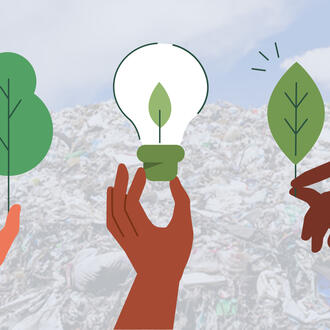Ideas Made to Matter
To unleash renewable energy in Latin America, build a better battery
In the Atacama desert, on Chile’s border with Bolivia, the isolated village of Ollagüe is doing power its way.
Earlier this year, the 200 inhabitants of Ollagüe began using a microgrid to power the village. While the grid does burn diesel, about 65 percent of its energy comes from solar, wind, and a battery powered by the two.
The still-new project means residents can keep lights on past 2 a.m. for the first time ever. It has been “…an enabler of social and economic development way beyond [what we] expected,” said Salvatore Bernabei, head of Enel Green Power Chile, which developed the grid.
It’s the storage—the battery—that really allows the town to keep green power pumping through the night. Energy experts and economists say affordable, reliable storage is one of the last bridges to sustainable power worldwide.
Bernabei discussed Ollagüe at The Future of Energy: Latin America’s Path to Sustainability, an Aug. 18-19 conference in Santiago, Chile hosted by the MIT Sloan Latin America Office and the United Nations Economic Commission for Latin America and the Caribbean.
Bernabei said he expects a boom in storage as demand for electric cars and microgrids increases, a sentiment echoed by other speakers from private industry. The combination of affordable storage and microgrids could mean reliable energy for isolated communities like Ollagüe for the first time ever, he said.
A better battery
MIT Professor Donald Sadoway is developing a liquid metal battery that he thinks could be the critical breakthrough in bulk storage. He said it will take 607 years of daily cycling for the battery to drop to 80 percent capacity. Today, nearly all of the world’s bulk storage is pumped hydroelectricity, a less efficient and often environmentally controversial technology.
Abundant battery storage could mean decentralization and democratization of energy, Sadoway said. Communities like Ollagüe would not have to rely on outside sources of power and could better manage the intermittent nature of renewable energy resources.The technology is of particular interest in Latin America, where growing economies and living standards are increasing energy demand and few countries have significant fossil fuel resources of their own. There is, however, plenty of sun.
MIT Sloan Senior Lecturer Francis O’Sullivan said Latin America could be awash in solar energy, and that adequate storage would make the cost of solar competitive with the cost of fossil fuels.
“The future of success of photovoltaics is intimately linked with that of storage,” O’Sullivan said.
Latin America’s unique environment
Throughout the conference, private industry participants like Bernabei said other impediments to significant renewable energy deployment include uncertainty about regulations and subsidies.
Luca D’Agnese, CEO of Santiago-based utility Enersis, a subsidiary of Enel, said the same challenges that face Latin America—economic and population growth, a mix of energy sources, desire for self-governance free of an extensive grid—create a “distinct profile” for testing new technologies, including microgrids and smartgrids. Some parts of Latin America operate without energy subsidies, he said, offering opportunities for renewable energy technologies to prove themselves in free markets.



